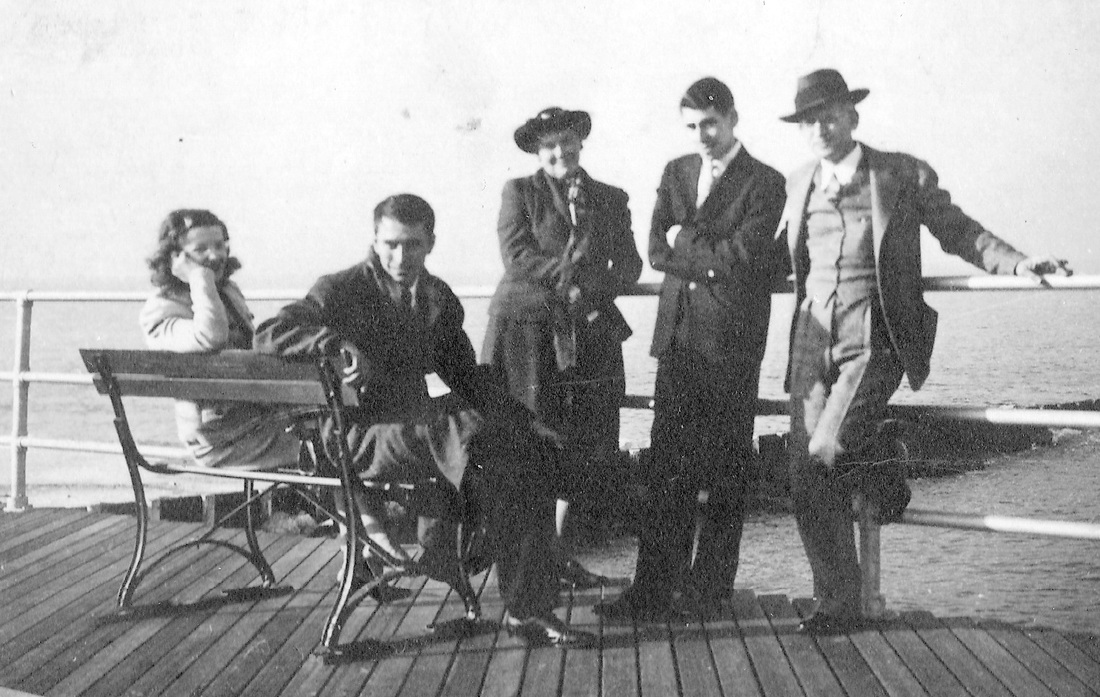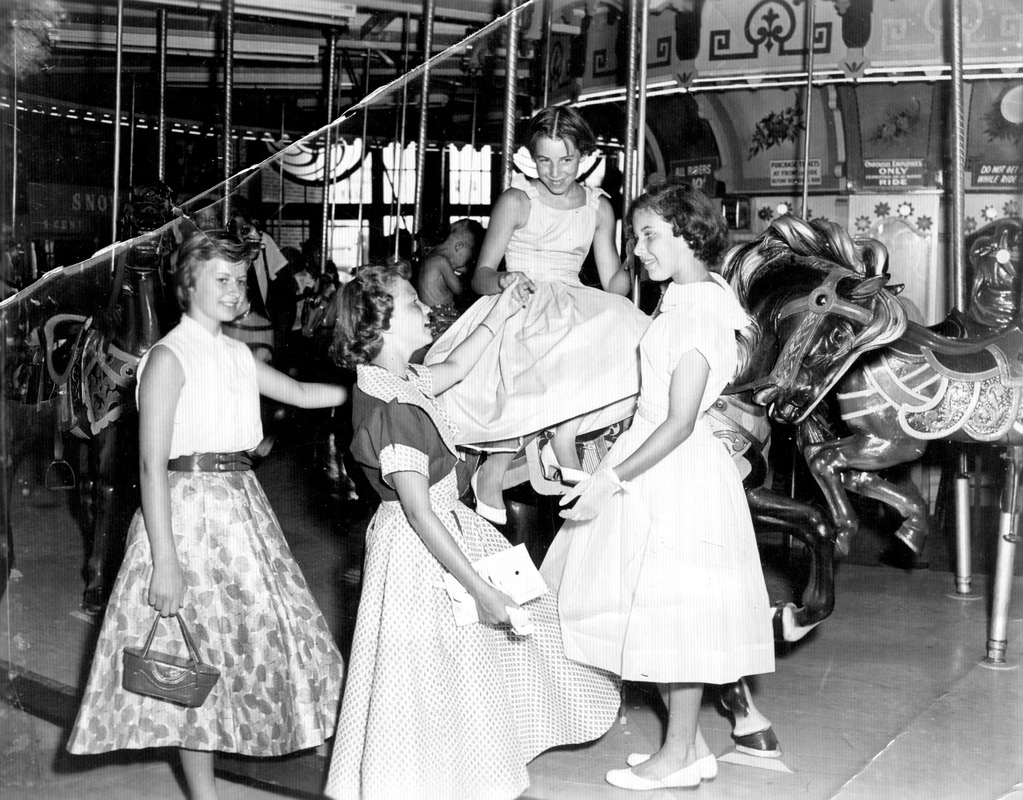The world’s first boardwalk opened in Atlantic City on June 26, 1870. The Jersey shore boasts more boardwalks than anywhere else in the US, with nearly every coastal town having one, some extending from one town to the next. If you grew up on the Jersey Shore, the boardwalk was as much a feature of the natural world as a mountain or a lake might be in some other place.
Who doesn’t love a boardwalk? It was a place where people could come to see and be seen, to admire each other’s finery and the incomparable view of the wild Atlantic. It was a great equalizer - free, so rich and poor alike could enjoy its blandishments. It was a place to stroll and relax, a place guaranteed to please your houseguests, be they visiting dignitaries or simply friends and relatives. This photo, which I believe dates to around 1940, shows my mother on the left entertaining her inlaws - my grandmother (center) and grandfather (right) flanking my Uncle Sid. Not sure who the man sitting next to my mother is - possibly my Uncle Quentin. My father must have been taking the photograph. No dressing down for the weekend here!
What I remember most vividly are the rides (as in, “Mommy, can we please go on the rides?”), and mostly the rides for little kids (remembering that I moved away when I was thirteen). The fun house was a perennial favorite. Also high on the hit parade (in more ways than one) were the bumper cars; my father took us, which was part of what made it so special, and it would be hard to say who enjoyed it more, the children or their dad. Among the most memorable rides for me was the tilt-a-whirl, mostly because a friend and I went early in the season one year, when hardly anyone else was around, and the kid who ran it thought he was giving us a treat by letting us stay on for maybe half an hour. After that I never wanted to see another tilt-a-whirl in my life. Sixty-some years later and the thought still makes me queasy.
Best of all was the merry-go-round. When we were infants we maintained a wobbly perch on the stationary animals, held in place by our parents who rode the merry-go-round by our sides. As we grew bigger, we rode alone, and eventually we graduated to the horses and tigers that moved up and down the mounting post in a pattern that was supposed to simulate galloping. The last frontier was the gold ring. Even at twelve, I had to stretch to my limits to reach the ring dispenser. Most of the rings were steel gray, but occasionally a gold ring was dispensed; and your reward for catching the gold ring was - a free ride and a chance to try again for another gold ring. There’s a life lesson there, I’m sure.
At the time, of course, I had no idea when I hopped aboard the merry-go-round that I was tapping into a tradition that can be traced back to medieval jousting matches in which riders galloped in circles while tossing balls in the air. By the 17th century, the balls had been replaced by small rings hanging from poles that the riders were supposed to spear - presumably the antecedent of the gold ring. By the mid-19th century the modern platform carousel had been developed (in earlier versions the animals hung from chains and riders would fly out via centrifugal force as the carousel picked up speed) and was a popular feature at fairs. In the US a thriving carousel industry grew up, staffed by skilled craftsmen who created ever more elaborate and lavishly decorated animal figures. Although most of the master carvers were European immigrants, the animals on the Asbury Park merry-go-round were carved by the American craftsman Charles I.D. Loofa - though a few had to be purchased at the last moment to meet a delivery deadline.
My love affair with the merry-go-round puts me in good company. The author Stephen Crane, who grew up in Asbury Park, loved the Palace carousel and courted his girlfriend with nonstop rides in the early 1890s. Asbury Park's other "favorite son," Bruce Springsteen, was filmed riding the carousel in 1987 for the music video "Tunnel of Love" - though alas for carousel fans, that footage ended up on the cutting room floor.
Sadly, the horses have now been put out to pasture and the three (!) splendid band organs silenced. Palace Amusements closed its doors in November of 1988 and was demolished in 2004, despite being listed in the National Register of Historic Places and despite strong protests by local preservationist organizations. Interestingly, just before the demolition, urban archeologists dug up hundreds of rusted rings; the Palace was still using its ring machine until the day it closed, long after most amusement parks had discontinued the practice in the face of rising costs for rings and insurance.
The carousel was moved in 1990 to an amusement park somewhere in the South. A few years later, when that facility folded, an optimistic New Jersey real estate developer purchased the operating mechanism and returned it to New Jersey in hopes of reinstalling it in a restored Palace building. That hope fizzled when the Palace was demolished, and the remnants of the merry-go-round turned up for auction on eBay. Any attempt to restore the ride to its former glory would require replicas of the figures since most of the originals were long since sold off individually and disappeared into private collections. One more treasure on the junk heap of history....
The photo below, taken on July 6, 1955, subsequently appeared in the Asbury Park Press - truly a case of “The photographers/ will snap us/ and you’ll find that you’re/ in the rotogravure.” My friends and I were recruited to pose for this feature, and I remember much debate about what to wear for the occasion. Naively, we thought the photoshoot was all about us; in retrospect, our job was probably less to show off our Sunday best and more to show off the gorgeous old merry-go-round.



 RSS Feed
RSS Feed